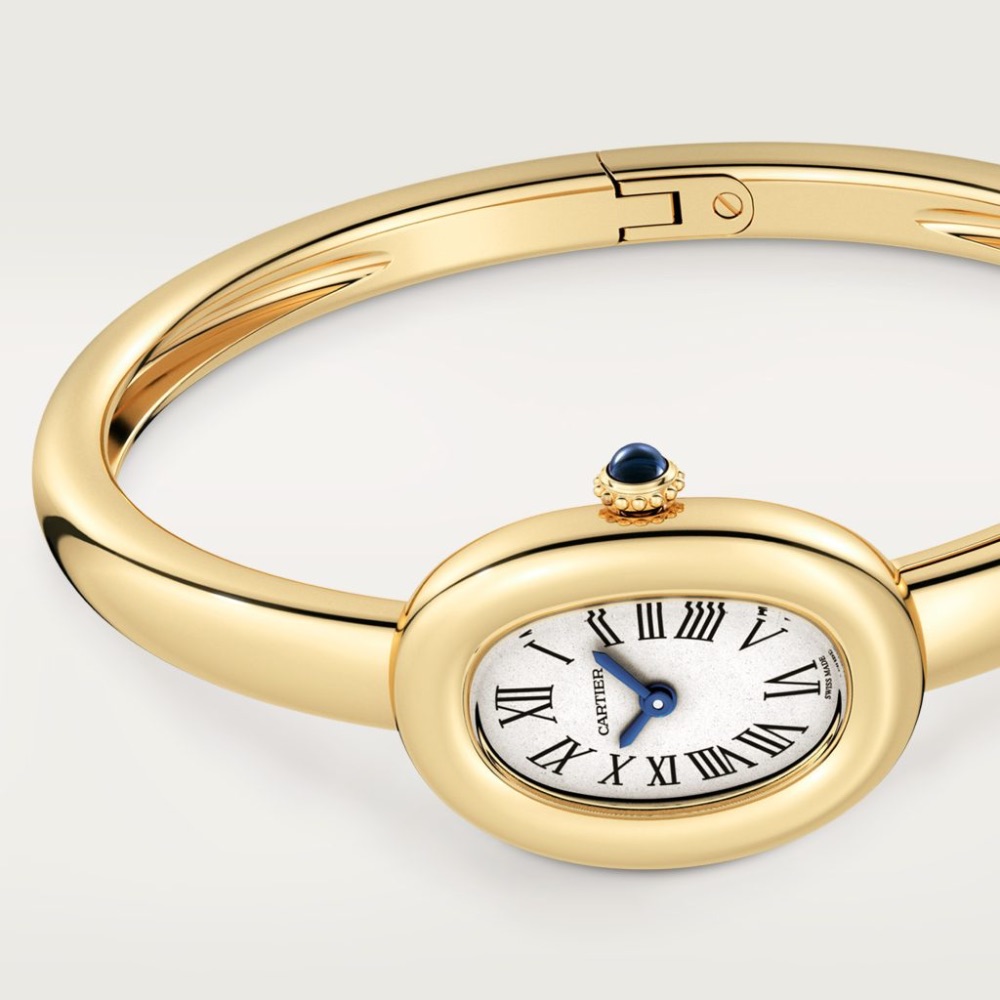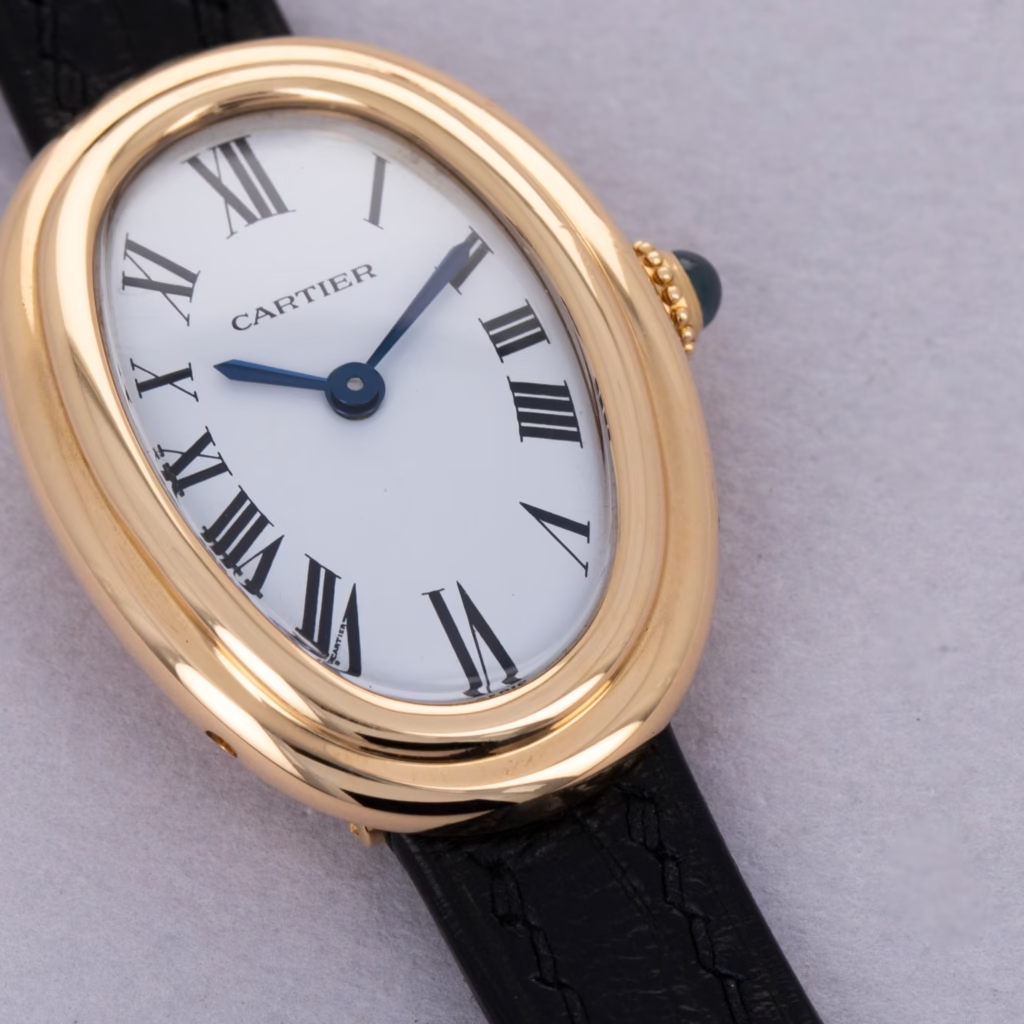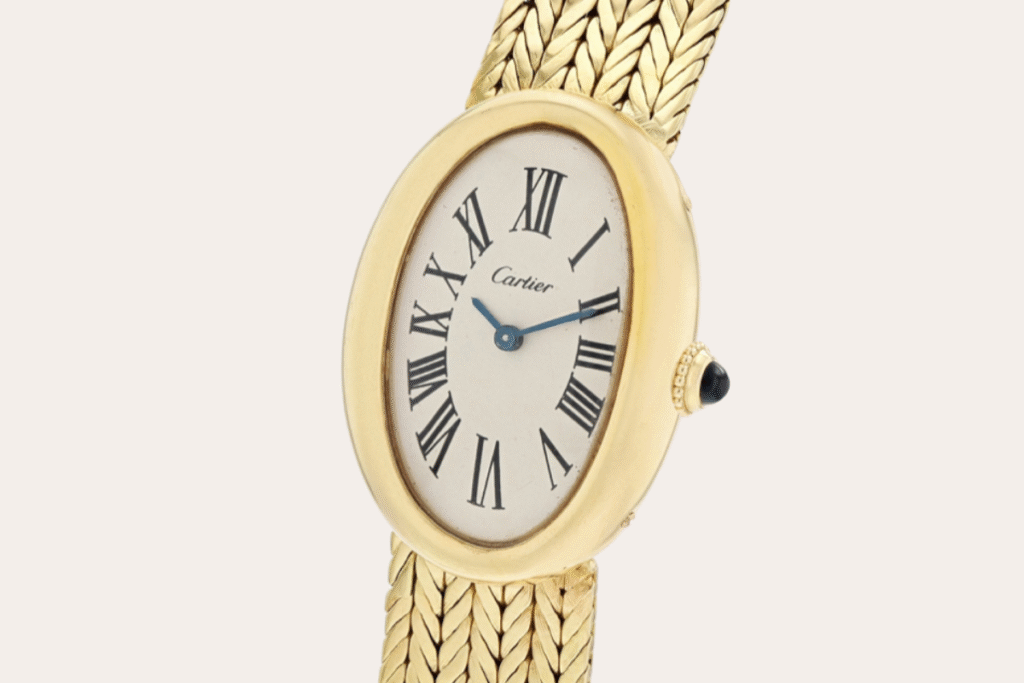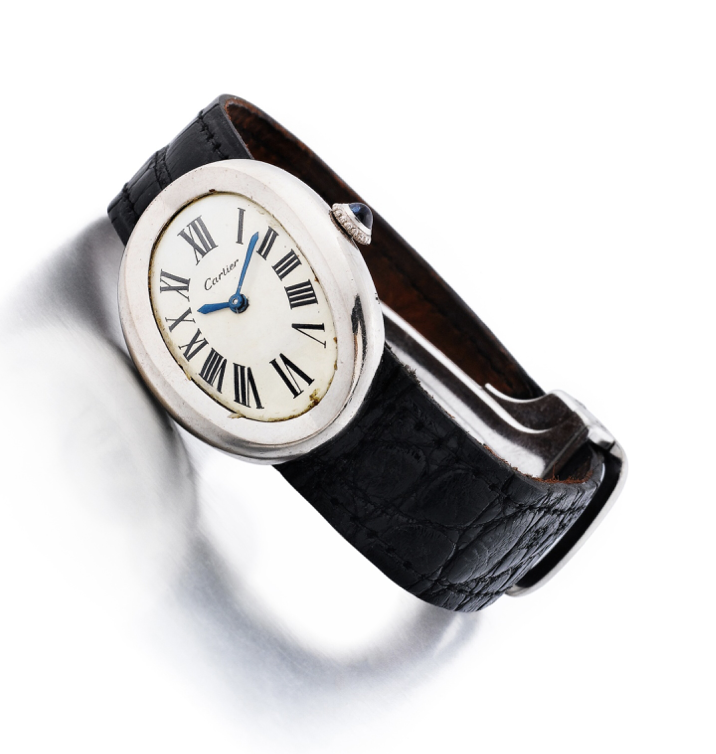Two weeks ago, while attending the Geneva auctions, one watch absolutely stole the show: the white-gold Cartier Baignoire with London case and black dial sold by Sotheby’s, soaring to an impressive €250,000.
A result that didn’t surprise me too much, this model has fascinated me for years, and seeing such a rare example exceed expectations only reinforces its magnetic aura.

In this article, I want to take you through the history of the Cartier Baignoire, explore its most iconic variations, and explain why, in my view, it represents one of the most poetic chapters in the Maison’s production.
An icon born in 1912
The story of the Cartier Baignoire begins in 1912, when Louis Cartier designed a model intended for a distinguished name: Grand Duchess Maria Pavlovna of Russia, one of the maison’s most esteemed clients.
Even then, the idea was radical, an elliptical watch, far from the traditional shapes of the era, which would eventually reach its definitive form in 1958.
The name “Baignoire” is often linked to its resemblance to a small bathtub, but another interpretation is equally plausible: a reference to the baignoires in Parisian theaters, the oval boxes reserved for the most important spectators. A tribute, therefore, to elegance and a privileged view on the world.

Its bold yet refined design marked Cartier’s entry into an aesthetic language where jewelry and watchmaking coexist on equal footing. And this stylistic identity has remained intact—modern in spirit, yet with a vintage soul.
Paris vs London: two souls, one masterpiece
From the very beginning, the Baignoire was produced in Cartier’s two historic locations, Paris and London, giving life to two distinct interpretations of the same concept.
The London case is more elongated, shaped from a single oval, often in larger dimensions, with a stronger, more sculptural presence. The Paris case, on the other hand, is built from two overlapping ovals that create a characteristic step; usually more compact, it often appears in yellow gold with a white dial, and at times without a crown or cabochon.

These differences have fueled, over time, a true mythology among collectors, some favoring the pure London silhouette, others the architectural charm of Paris. The market has especially rediscovered hand-wound examples from the 1960s and ’70s, now achieving remarkable auction results. Among contemporary references, the rigid-bracelet Baignoire Mini stands out as one of the most refined expressions of the fusion between jewelry and watchmaking.
Auction records: an ascent that doesn’t stop
The rise of the Cartier Baignoire in recent years has been remarkable. High-quality vintage examples from the 1950s, ’60s, and early ’70s are attracting increasingly strong global interest.

Beyond the already mentioned black-dial Baignoire sold at Sotheby’s, several noteworthy results deserve mention: the yellow-gold Baignoire gifted by Elizabeth Taylor to Joseph Losey, featuring an extraordinary white-gold bracelet, an icon meeting an icon, sold by Sotheby’s for €95,000; the model owned by Shirley Bassey, with a white-gold case, the legendary voice behind Goldfinger, which exceeded €60,000 and far surpassed expectations, also sold by Sotheby’s; and a stunning Baignoire Oblique designed to be worn by pilots, sold by Christie’s in 2022 for over €65,000.

The pattern now seems clear: rare variations, metals other than yellow gold, unusual dials, and especially the larger London case are the elements that ignite collectors’ desire and drive prices ever higher.

Conclusion: why the Cartier Baignoire is a masterpiece
The Cartier Baignoire is one of those objects that appear simple at first glance but conceal a complexity of history, proportions, and identity that few creations can match. It is a watch that has crossed more than a century without losing its charm, able to be classic yet never banal, elegant without being pretentious, both jewel and timepiece in a single form.

And it is precisely this duality, part rebellious, part aristocratic, that continues to captivate enthusiasts and collectors more than ever.
Follow us on our social media channels to stay up to date with the latest news from the world of watchmaking, and discover what’s new on Watchype.
